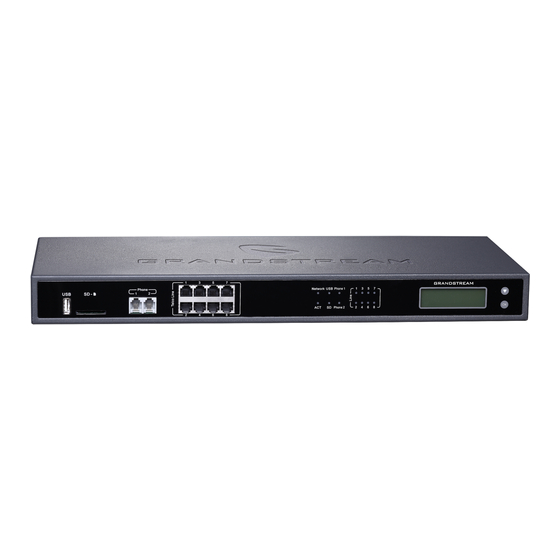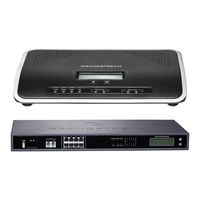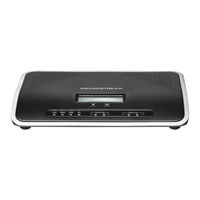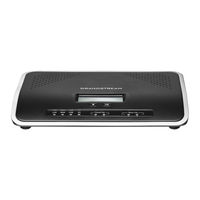
Grandstream UCM6202 Manuals
Manuals and User Guides for Grandstream UCM6202. We have 9 Grandstream UCM6202 manuals available for free PDF download: User Manual, Security Manual, Manual, Quick Installation Manual, Configuring
Grandstream Networks UCM6202 User Manual (355 pages)
UCM6200 Series
IP PBX
Brand: Grandstream Networks
|
Category: PBX
|
Size: 10 MB
Table of Contents
Advertisement
Grandstream Networks UCM6202 User Manual (337 pages)
IP PBX
Brand: Grandstream Networks
|
Category: IP Phone
|
Size: 9 MB
Table of Contents
Grandstream Networks UCM6202 User Manual (308 pages)
UCM6200 series IP PBX
Brand: Grandstream Networks
|
Category: PBX
|
Size: 8 MB
Table of Contents
Advertisement
Grandstream Networks UCM6202 Manual (31 pages)
Analog Trunks
Brand: Grandstream Networks
|
Category: Telephone
|
Size: 1 MB
Table of Contents
Grandstream Networks UCM6202 Security Manual (32 pages)
IP PBX
Brand: Grandstream Networks
|
Category: Network Hardware
|
Size: 1 MB
Table of Contents
Grandstream Networks UCM6202 Manual (28 pages)
Analog Trunks
Brand: Grandstream Networks
|
Category: Office Equipment
|
Size: 1 MB
Table of Contents
Grandstream Networks UCM6202 Configuring (13 pages)
Brand: Grandstream Networks
|
Category: Offroad Vehicle
|
Size: 0 MB
Table of Contents
Grandstream Networks UCM6202 Manual (12 pages)
Firmware Upgrade Server
Brand: Grandstream Networks
|
Category: PBX
|
Size: 0 MB
Table of Contents
Grandstream Networks UCM6202 Quick Installation Manual (22 pages)
IP PBX Appliance
Brand: Grandstream Networks
|
Category: PBX
|
Size: 3 MB








